Review of Mushi-shi: Volume 2
Introduction
Spooks and spectres figure strongly in Japanese folklore, there is a strong sense of spirituality and communion with nature that resonates all the way to modern entertainment, and it`s no surprise that Hollywood is now aping many Eastern horror films in order to breathe life into the putrid corpse of their entertainment industry. Naturally this fascination with the supernatural is a strong source of inspiration for manga and anime, and scarcely a year goes by that there aren`t ten or so such spooky series debuting in the UK market alone. You would think that with the abundance of vampires, ghosts, demons and spirits that there would come a point when the average anime fan would have seen it all, and would have nothing left to gain from yet another such series. But then Mushi-shi turns up for review, unlike anything I have seen before, and offering a new perspective on the supernatural.
Mushi are the most primitive of life forms. Elusive and ethereal, and existing since time immemorial, they have come to be the cause of many superstitions and supernatural legends. Ginko is a Mushi-shi, a Mushi Master. He travels the country investigating these odd creatures, and helping those people who, for good or ill wind up interacting with them. Following the amazing first volume, I have been breathlessly awaiting this second. Five more episodes are presented in Volume 2, released by Revelation.
6. Those Who Inhale The Dew
There is an isolated, rocky island, accessible for only one day a month, where a curious hierarchy has formed. The villagers worship the `living god`, a member of the hereditary chief`s family who is chosen to bear miracles. Every night the living god grows old and apparently dies, only to wake again the next morning, young and renewed, and oblivious to what happens each day. A young boy and girl were playmates in childhood, before she was chosen to be the next living god. The boy wants his friend back, and has been looking for help. He`s found Ginko, who he brings back with him across the treacherous ocean currents.
7. Raindrops and Rainbows
Sheltering from a rainstorm, Ginko meets a man with a large empty jar on his back. He explains that he is trying to find the source of a rainbow, and has been chasing rain clouds and sudden showers for the last five years. As a child, his father once touched a rainbow, an event that forever altered his life, though not necessarily for the better. From then on, the rain would drive him into a state of euphoria; he developed an unquenchable thirst, and soon became bedridden. Derided and belittled by the townsfolk and even his wife, his son vowed to find and capture a rainbow to prove him sane. Ginko offers to help him on his quest, but the young man`s motives are unclear, even to himself.
8. Where Sea Meets Man
For two and a half years, a man has waited by the sea. His life had taken a turn for the worse, and he was heading home to a fishing village with his wife, but they got caught in a strange phenomenon. The sea became hazy, a swarm of sea snakes passed under their boats, and they were separated in the mayhem. His last words to his wife were harsh, and since then he has waited patiently for the sea to give up its dead. This phenomenon occurs on a regular basis, and it is said that after around three years, the boats and effects of those lost in the haze will be returned.
9. The Heavy Seed
Ginko`s travels aren`t easy, especially when the harvest is bad and food is scarce. But there is a village that neighbouring farmers speak ill of. Whenever the harvest is bad for everyone else, they prosper. Ginko is driven to investigate, and finds a tragic tale. The head priest of the village tells that their ancestors watch over them, and that when times are hard, they offer a covenant of a good harvest in exchange for a life, and in effect the weakest resident of that village is sacrificed. It`s infertile, hard land at the best of times, and this year the harvest looks as if it will fail again.
10. The White, Which Dwells Within The Inkstone.
Ginko`s friend Dr Akashino finds that he is need of a mushi-shi`s services when some local children sneak into his storage shed and find an inkstone. It`s an exquisitely carved item, and the children can`t resist trying it. That evening they all fall sick, their temperatures dropping. Akashino bought it because he thought it was made from fossilised mushi, but these mushi are very much alive. If Ginko is to help the children, he`ll have to find the artisan that carved the inkstone.
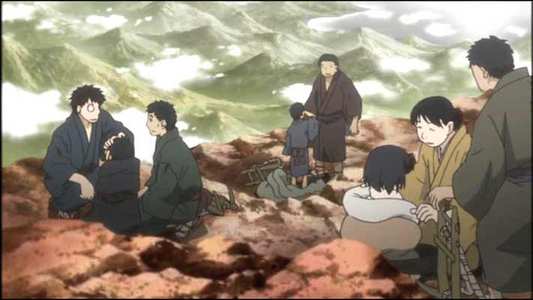
Video
Mushi-shi gets a 1.78:1 anamorphic transfer that aside from the odd artefact in the re-edited title sequence is free of any significant blemish. The transfer is as clear and sharp as NTSC-PAL gets, and the colours are lush and striking. This is an anime that takes the breath away in terms of the design and the animation. Mushi are a phenomenon strongly associated with nature, and Ginko`s travels take him to rural idylls and isolated communities in forests full of lavish natural colours. The character designs are simple but effective, but the thought gone into the animation takes it to theatrical quality. The limited palette of colours makes for an atmospheric piece, and the realisation of the ethereal mushi is stunningly accomplished. This is perhaps the most beautiful animation that I have seen this year.
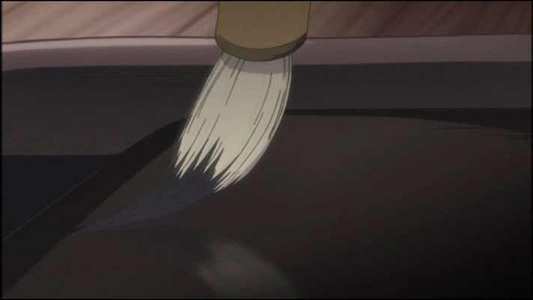
Audio
You get sound in DD 2.0 stereo in English and Japanese flavours, along with translated subtitles and signs. The audio options are robust and surprisingly effective stereo tracks, with subtle sound design coming through the speakers. The effects reflect the gentle tone of the stories, and the music is atmospheric yet understated. This is a story where the sound of a footstep in snow, or the whisper of a breeze makes more impact than anything strident and obvious. It`s certainly one of the better stereo discs, but I wonder how much more effective a 5.1 soundtrack would have been.
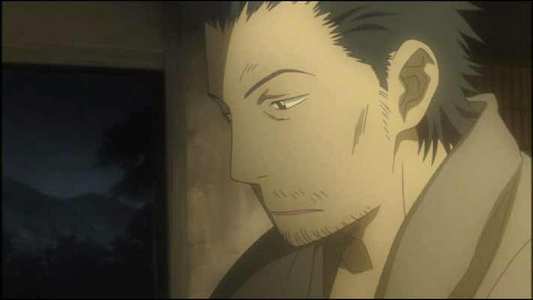
Features
The usual suspects here include a jacket picture, trailers for Beck and Tsubasa, and the textless songs although only one of the end themes is here (Mushi-shi`s episodes all get different end themes that suit their particular stories).
Just as last time, there are a couple of interviews to be getting on with.
Director Interview #2 lasts 15 minutes and has director Hiroshi Nagahama talks to Character Designer/Illustration Director Yoshihiko Umakashi, oddly enough about Character Design. He`s a shy interviewee and he has to be coaxed by his jovial director.
More voluble is Takeshi Waki, Art Director. He`s interviewed, again by Hiroshi Nagahama in Director Interview #3. This lasts 14 minutes. Both these featurettes are presented in 4:3 and are subtitled.
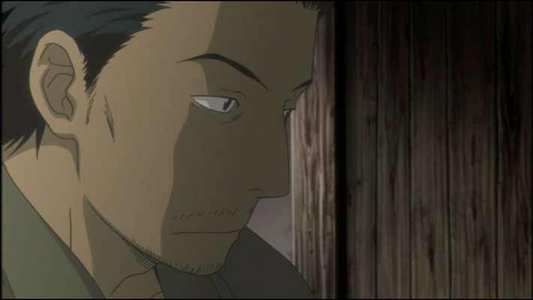
Conclusion
I think I blew all my lavish praise and unfettered gushing on the first volume. Mushi-shi set a high standard with the first five episodes. They were stories that were exquisitely animated, delicately told, and a sheer delight for the senses. It`s as if someone captured beauty, and then animated it. What really astounded me was that each episode gets a little under 20 minutes of run time, in which to introduce and develop characters, tell a story with a strong emotional core, and then do it all effortlessly at a languid pace. To do it once is spectacular, to do it again and again signifies something very special indeed. That first volume was a hell of a debut. And yet these next five episodes vary not one whit in terms of quality.
To call them ghost stories, or supernatural tales would imbue them with a sense of horror, an expectation that you will be spooked. The truth is far from it. While the mushi themselves are supernatural, ethereal creatures, the stories are based very much in nature, there is a sense of wonder and emotion that runs through them that makes Mushi-shi a show to experience, to be immersed in, to be uplifted by. Just as before, the mushi are neutral, lacking malice or compassion, and it`s how people react to them that forms the core of the stories.
While these are episodic tales, there is a small degree of continuity, and we proceed to learn more about Ginko here. He`s the sort of man who is taken by whim, who lets his interest in mushi take him where it wills. We also learn here that he is a little unconventional as a mushi-shi. Mushi-shi are supposed to act from an altruistic viewpoint and not materialistically, but we learn that there are some bad seeds, mushi-shi that have acted dangerously and exploited mushi. Ginko isn`t one of those, but we learn that he is unconcerned with bending a rule or two where he needs to. There is a little more continuity when we meet Dr Akashino again, and this time it is his interest in mushi that gets him into trouble. But generally these are individual tales that can prove, sad, tragic, joyous, melancholy and liberating. It`s a show with a strong emotional core to it, which makes the stories all the more satisfying.
These are wondrous, mythical tales that have a universal appeal, the anime looks and sounds amazing, and this is really as good as it gets. There is an art to telling short stories, and it`s an art that the creators of Mushi-shi have mastered. If you like anime, buy this disc, if you don`t like anime, buy this disc, and if you`ve never even heard of anime, buy this disc. You won`t be disappointed.
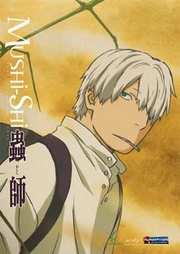





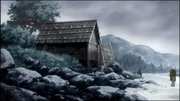
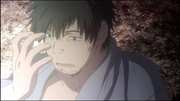
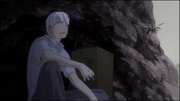
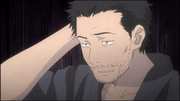
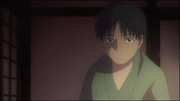
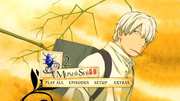
































Your Opinions and Comments
Be the first to post a comment!